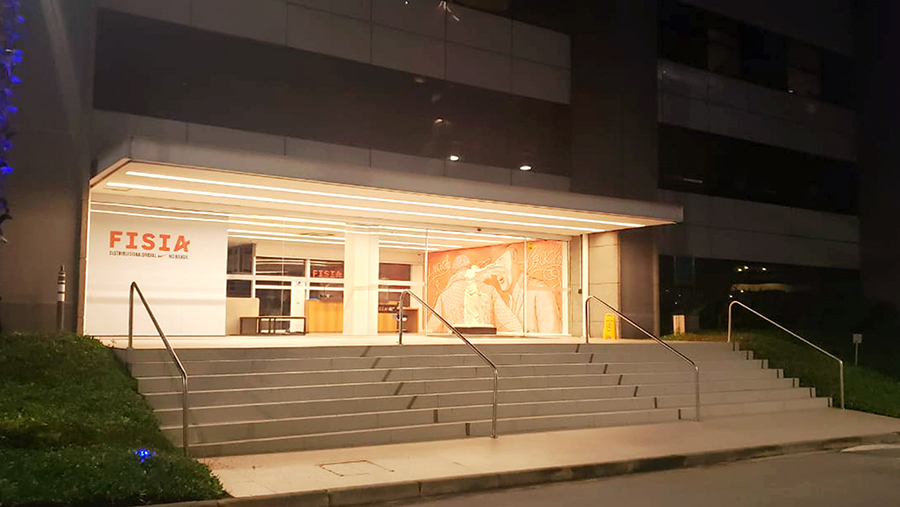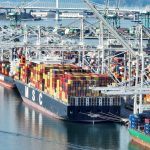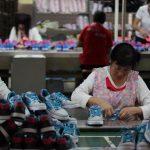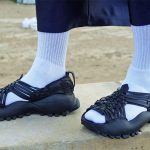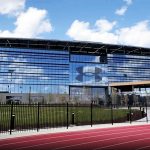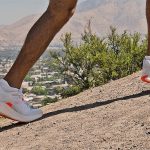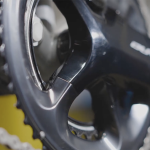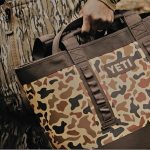Grupo SBF, owner of the Centauro retail operations in Brazil, and Fisio, Nike’s retail and wholesale brand owner in the country, posted consolidated net revenue totaled R$1.8 billion (~$334.2 million) in the 2025 second quarter, a 6.1 percent increase in reported real terms compared to the second quarter of 2024 (year-over-year, y/y).
Grupo SBF and its two subsidiaries report in the Brazilian real (R$) currency. Any translation to U.S. dollars ($, USD) is based on spot rates as of August 12, 2025. The real showed significant devaluation against the USD in the first half.
Consolidated gross profit reached R$891.9 million in Q2, with 4.6 percent y/y growth, and consolidated gross margin reached 49.1 percent of net revenue, a compression of 70 basis points compared to the 2024 second quarter, mainly impacted by the Fisia Nike operation, due to currency exchange variation.
Despite the revenue growth, adjusted EBITDA was R$167.4 million, representing a 4.9 percent decline compared to the 2024 second quarter, reflecting the investments made during the quarter. EBITDA margin reached 9.2 percent, with a compression of 110 basis points.
Adjusted net income reached R$87.2 million in the quarter (a 4.8 percent margin), representing 19.1 percent growth compared to the 2024 Q2 period. The company stated that this result was primarily driven by the implementation of the ICMS tax incentive in Fisia’s physical store channel, resulting from the distribution of products through its own distribution center in Extrema, MG.
The company stated that it maintains a balanced capital structure, achieving a leverage ratio of 0.68x in the second quarter, which remains in line with the 1Q25 level and represents a reduction of 0.38x compared to the second quarter of 2024. It is important to emphasize that, despite the strategic plan being in progress, we intend to maintain the indicator at a comfortable and safe level, particularly given the current Brazilian macroeconomic scenario.
Reinforcing the company’s focus on maintaining healthy debt levels, Grupo SBF reduced net debt by 33.1 percent year-over-year, totaling R$506.1 million in the second quarter.
Additionally, in July, the company issued a new debenture line worth R$500 million, with a 5-year maturity period. Issued at a cost of CDI + 0.85 percent, which is below the average of previous issuances, the company stated that this operation will positively impact the average cost of debt.
During the quarter, the company reported that it also improved the cash conversion cycle by 15 days, benefiting from a 27-day increase in accounts payable. This is consistent with the normalization of Fisia’s purchasing dynamics, as observed in previous quarters. Still, there was a 9-day increase in inventories, explained by the higher volume of Centauro’s purchases, following the sales growth plan. Despite this increase, the quality of Centauro’s inventory was reportedly a highlight, reaching one of the lowest levels of old inventory, with a reduction of 3.6 percentage points compared to June 2024.
Business Unit Summary
Centauro
Centauro completed 44 years of business on April 1, 2025, and Centauro’s revenue in the second quarter recorded the highest level for a second quarter in its history. Net revenue totaled R$940.7 million, representing a 9.4 percent increase year-over-year. This growth resulted in a 10.9 percent expansion in gross profit and a 70 basis-point increase in gross margin.
Centauro’s physical stores recorded net revenue of R$713.8 million, 7.0 percent y/y increase, with same-store sales growth of 10.6 percent y/y.
Centauro’s digital channel posted net revenue of R$226.9 million, a 17.8 percent y/y increase.
Fisia
Fisia is now said to be under new leadership and the subsidiary focused on the company’s Nike business (both Wholesale and DTC) is said to remain committed to the initiatives aligning with Nike’s global strategy, with a focus on:
- recovery of the Wholesale channel
- strengthening the presence in soccer;
- implementing the new strategy for running; and
- maintaining leadership in the lifestyle category with adjustments to the demand of the “Big 3” franchises.
“Besides that, we remain committed to improving inventory efficiency and increasing the presence of [the] NDIS store model,” management noted.
In the Wholesale channel, throughout 2024, Fisia said it adopted several initiatives to raise the level of service provided to its customers. These include expanding the commercial team, evolving the Portal — the company’s ordering platform, resuming brand events with a focus on strategy and collection presentations, adjusting product segmentation, and reducing markdowns on its DTC channels.
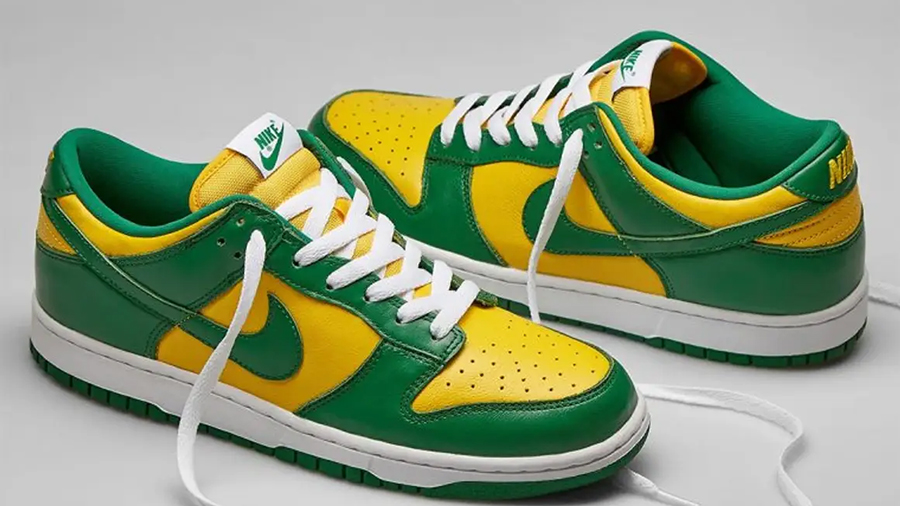 Fisia delivered net revenue of R$1.05 billion (~$192.4 million) in the second quarter, representing 5.6 percent growth year-over-year. Fisia showed growth in all channels in the quarter.
Fisia delivered net revenue of R$1.05 billion (~$192.4 million) in the second quarter, representing 5.6 percent growth year-over-year. Fisia showed growth in all channels in the quarter.
Wholesale showed recovery compared to the first quarter of the year and grew 4.4 percent compared to the 2024 second quarter.
Nike’s physical stores (NDIS + NVS) expanded by 8.2 percent, with same-store sales up 10.7 percent year-over-year. Nike’s digital channel recorded a 5.1 percent y/y increase.
Additionally, in the quarter, Fisia opened a new NVS (Nike Value Store) format store at Outlet Santa Maria in Ribeirão Preto, and expanded the NVS at Outlet Premium in Itupeva, which showed a 44.9 percent growth compared to the 2024 second quarter since its reopening. Nike Value Stores same-store sales were up 5.2 percent y/y in Q2, cycling against a 0.6 percent increase in Q2 2024. Fisia had 38 Nike Value Store format doors at the end of Q2, representing one net increase year-over-year.
Gross Merchandise Value (GMV) of the Fisia Nike retail business was up 5.4 percent y/y on a same-store sales basis, on top of an 8.3 percent increase in the year-ago Q2 period.
Fisia’s gross profit reached R$423.5 million (~$77.9 million), representing a 2.8 percent y/y retraction. Gross margin of 40.5 percent of net revenue was down 3.5 percentage points compared to the 2024 second quarter. This compression was said to be mainly driven by the devaluation of the Brazilian real in 2024, which impacted the cost of importing products, but was partially offset by the adoption of new tax incentives. In 2025, Grupo SBF management said they are intensifying the execution of the current plan and enhancing the management of future collections.
“We strengthened the merchandising team, which works on curating and selecting collections more aligned with customer needs, we expanded the commercial team focused on soccer clients, we dedicated a technology team to accelerate the Portal, and we will inaugurate an exclusive showroom dedicated to our wholesale clients,” the team published in the company’s Q2 report. With a focus on prioritizing its most important categories — running and soccer — in the region, the team said Nike restructured its line of road running shoes, adopting a leaner and more intuitive approach, built from consumer feedback — who sought greater clarity in choosing the ideal model for their daily training. The new strategy organizes the portfolio into three main franchises:
- Pegasus: responsive cushioning for daily use.
- Structure: cushioning with support and stability.
- Vomero: maximum cushioning, ideal for long distances.
Management said the first highlight of this approach in running was the launch of the Vomero 18, which had excellent acceptance and sales grew 46 percent compared to the second quarter of 2024. In soccer, they said they expanded their presence “in the national scene” by renewing the company’s partnership with Sport Club Corinthians Paulista for another 10 years and said they expect to sign further sponsorship agreements.
To support this expansion, the company reportedly strengthened its sports marketing focus, responsible for the relationship with clubs and prospecting new teams and athletes. A similar commitment was made in the soccer business.
“In May, we launched the new exclusive uniforms of the Brazilian Women’s National Team, in yellow and blue — the third version dedicated to the team, after the 2019 and 2023 versions,” management shared. “With the upcoming 2026 World Cup, a time of high visibility for our brands, combined with new sponsorship contracts and ongoing initiatives, we are confident that the company will be prepared to capture growth opportunities in a year with a highly relevant sports calendar.”
Images courtesy Nike, Fisia and Brands Awesome

